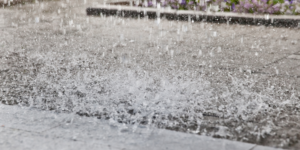
The Governor Gavin Newsom activated the State Operations Center to coordinate a statewide response ahead of the next round of incoming storms that are expected to bring significant impacts across the state, and has also urged residents to prepare.
Starting Tuesday night, a series of storms will hit the state over the next 10 days and are expected to bring significant rain, strong winds, deep snow, as well as possible flash flooding and power outages.
Given this, the State Operations Center in Mather is being activated to coordinate a unified response to these storms between state, local and federal agencies.
Newsom also ordered the California Governor's Office of Emergency Services (Cal OES) to lead an early, proactive effort to pre-position state personnel and equipment in communities most at risk for damage before the worst of the storms arrive.
The state is also taking steps to prepare for potential flooding by activating the Flood Operations Center for increased coordination and utilizing California spillways when necessary.
According to the National Weather Service, a significant series of weather systems will impact the state starting this week, bringing moderate to heavy rain, snow accumulation in the mountains and wind gusts of 60 to 70 miles per hour.
Precipitation will begin in far northern California on Tuesday and spread to the rest of the state on Wednesday, Thursday and Friday. This weather pattern will continue in the coming weeks, with above-normal precipitation across the state, especially in Southern California.
?The state is working around the clock with our local partners to deploy lifesaving equipment and resources across the state. With more storms on the horizon, will we continue to mobilize all available resources to protect Californians? Newsom said.
The authorities call on you to keep in mind 5 things you can do to stay safer:
- Stay connected. Californians are reminded to dial 311 for help or questions. If you have a critical emergency, call 911. Stay informed by signing up to receive emergency alerts, including warnings and evacuation notices. Go to CalAlerts.org to sign up and receive alerts from your county officials. Check with your loved ones and neighbors.
- Get your information from reliable sources. During a disaster, accurate information is essential. Check state and local government or emergency management websites and social media accounts for reliable information specific to your area. Local media and meteorologists are also a good source of information. Be wary of posts from unknown sources on social platforms or from online 'experts' without credentials.
- Prepare for strong winds. Before a high wind event: remove dead trees or overhanging branches near structures, remove loose roof material, bring unsecured objects from patios and balconies, secure outdoor objects that could fly, close windows safely and secure exterior doors. During a high wind event: Take cover next to a building or under shelter, stay away from windows, stay off roads and railroad tracks, avoid elevated areas such as roofs, watch for flying debris.
- Safe journey. Avoid non-essential travel during the peak of the storm expected on Sunday and Monday. If you must drive, download the QuickMap app or visit QuickMap (ca.gov) for up-to-the-minute information on road conditions, traffic, closures and more. Do not walk, swim or drive through flooded water. Turn around, don't drown! Remember, just six inches of moving water can knock you over and one foot of moving water can sweep away your vehicle.
- Be prepared in case of power outages. Take inventory of the items you need that rely on electricity. Keep your devices charged. Plan for batteries and other alternative power sources to meet your needs if the power goes out, such as a portable charger or power bank. Have flashlights for each member of the household. Also, plan accordingly for potential water outages.
You may be interested in: East Palo Alto warns of storms that will affect the area this week


